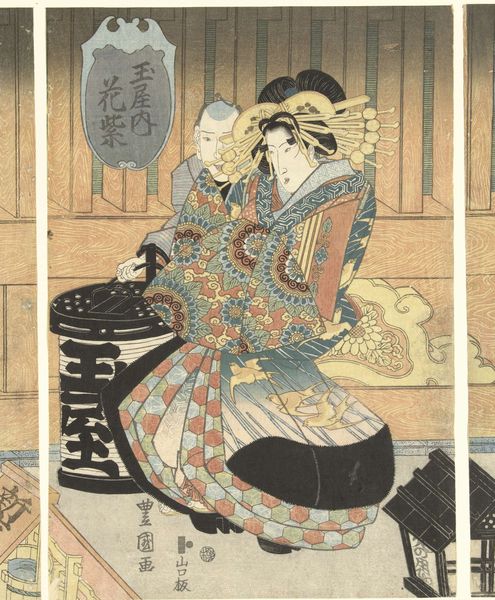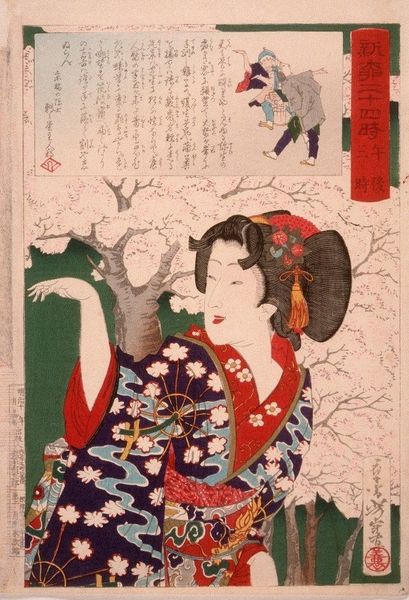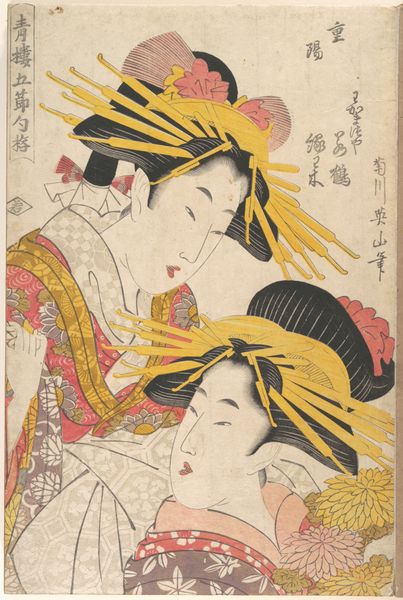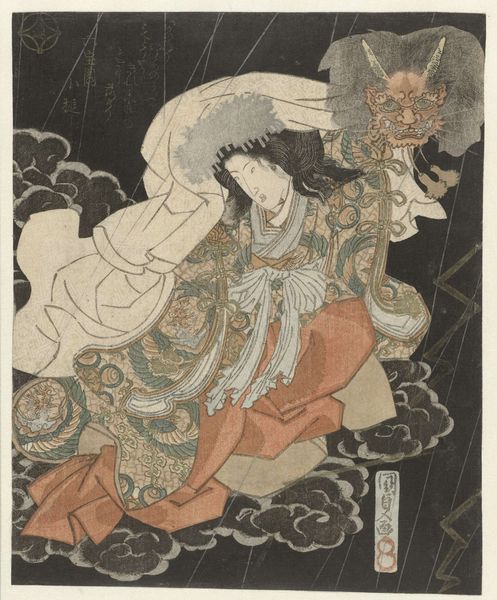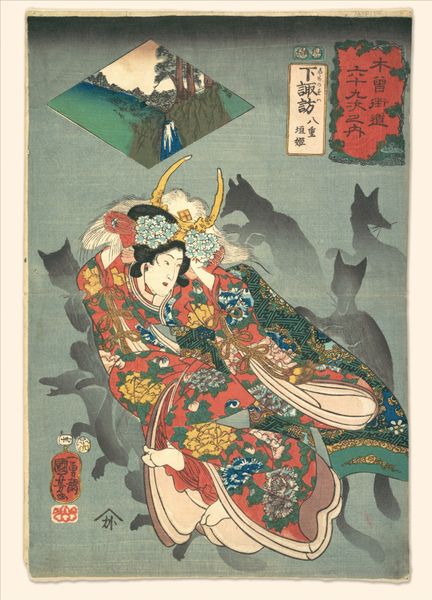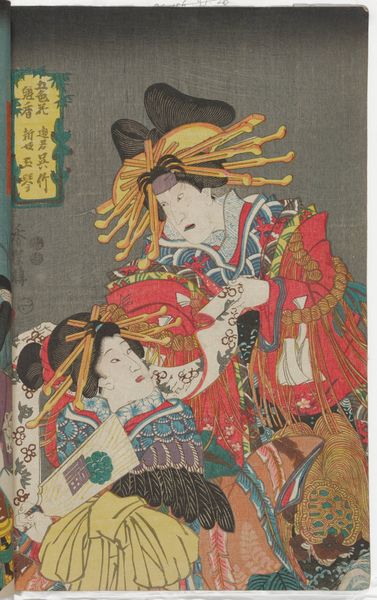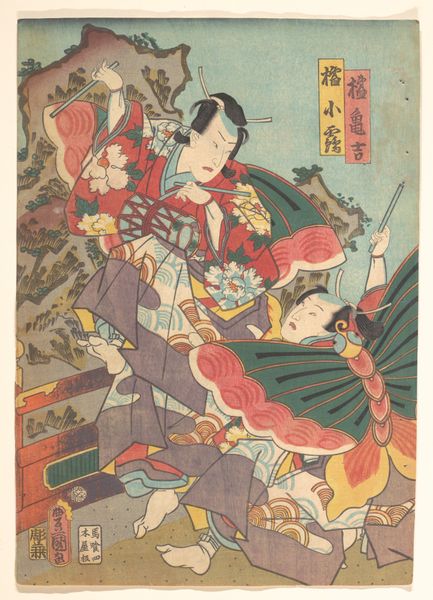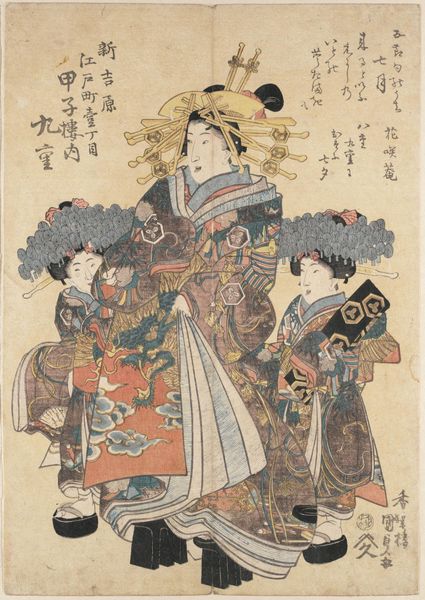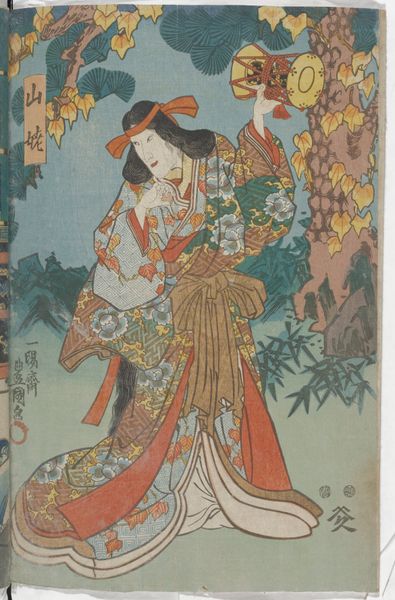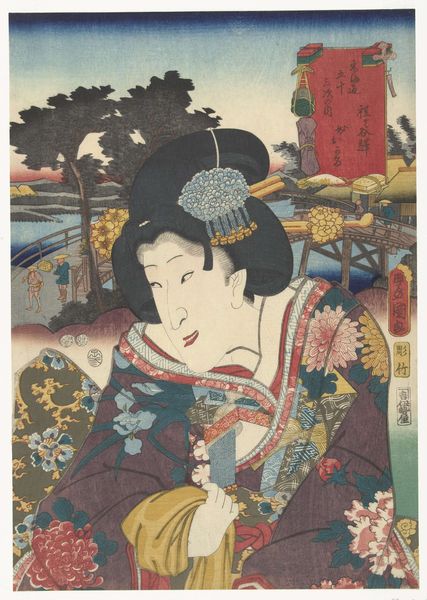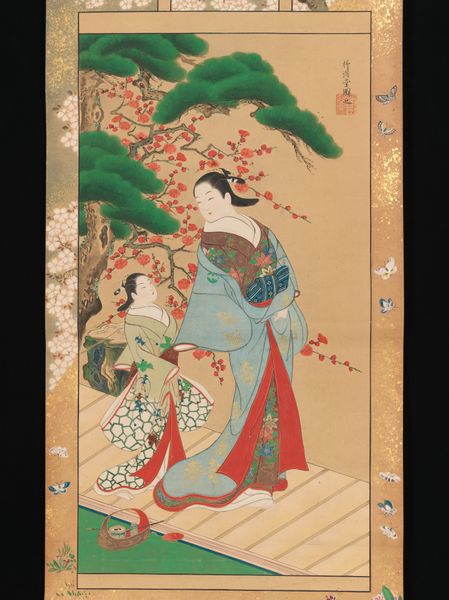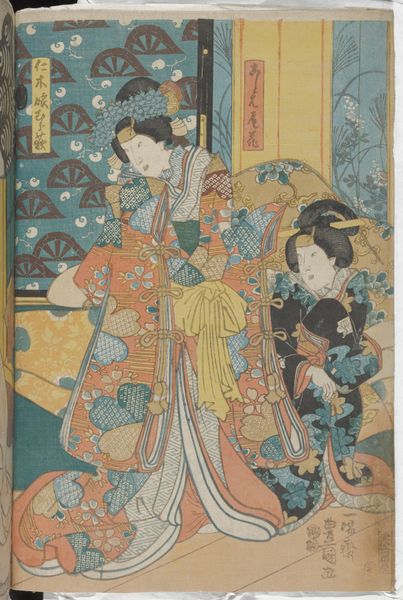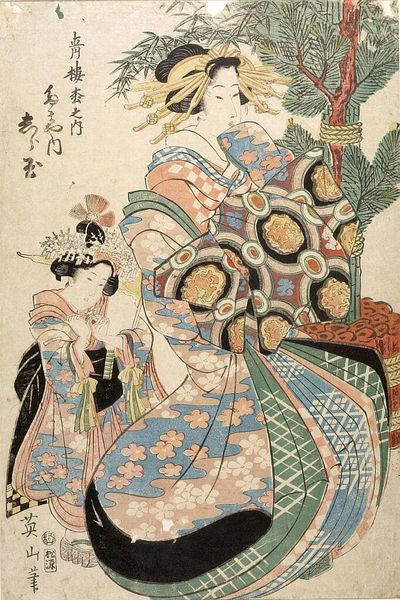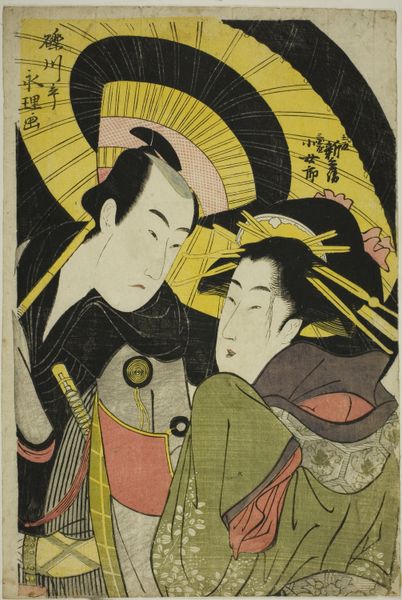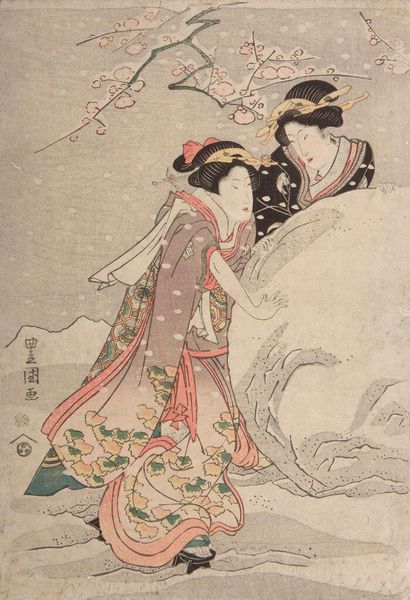
Copyright: Public domain Japan
Curator: Let’s focus on Paul Jacoulet's 1942 print, "La Confidente," a remarkable piece that seems deeply rooted in the ukiyo-e tradition while also pushing its boundaries. Editor: My initial response is captured by the intricate layering. The texture—even just picturing the layered inks in this printmaking process, it's so rich and ornamental but also conveys something almost secretive. What kind of social dynamics are we seeing here? Curator: Absolutely, considering Jacoulet's background, and the techniques involved in woodblock printing like the paper types, the ink formulations, and the carving process itself—reveal the immense labor behind these vibrant colors. These are not simple pigments; they're the result of skilled craftsmanship, deeply rooted in traditional techniques. Editor: Precisely, we can examine how "La Confidente" reflects complex gendered power structures within early 20th-century Asian societies, with these two women represented, heads together, in what clearly appears to be a private conversation. It raises issues about the limitations placed on women and the strategies of alliance and intimacy developed. The visual symbolism—the letter, the fan—hints at this undercurrent. Curator: These printed works also invite considerations about consumption. Jacoulet prints, made by Japanese artisans, found eager buyers primarily in wealthy, international circles during a tumultuous wartime period. There's a stark contrast in economic standing inherent in this international trade. Editor: Yes, we can also consider Jacoulet himself, a European artist engaging with Asian artistic forms, which introduces critical questions around appropriation, Orientalism, and cross-cultural interpretation in his work. Are we seeing a genuine attempt to understand and represent these women or exoticization? The piece really becomes this prism through which to examine cultural encounters and power dynamics. Curator: That complexity is enhanced when we recall the material value assigned both to traditional artisanal practices, and its influence from European artistry. He worked in concert with craftsmen, so that dialogue between traditional techniques and new market forces makes it neither easily reducible as either, one, appropriation, or, two, pastiche. Editor: Exactly. Reflecting on our dialogue here, it is a vivid, complex snapshot reflecting individual choices and collective realities concerning class, gender, and cultural exchange that persist. Curator: And considering how the layering in the production informs that depth, it's hard to resist how Jacoulet’s "La Confidente" continues to reward us in this intricate engagement.
Comments
No comments
Be the first to comment and join the conversation on the ultimate creative platform.
